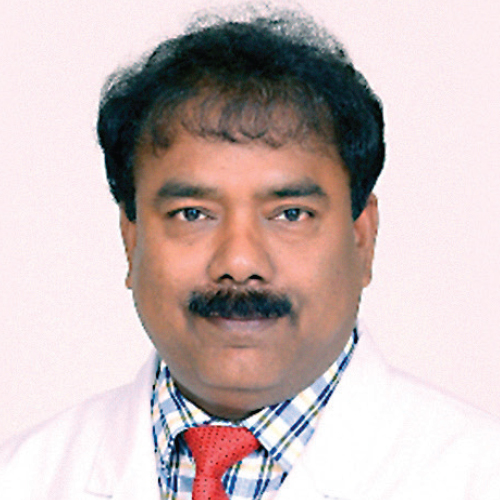
To provide access to affordable cardiac care in tier-II and tier-III cities, use of mobile cath labs and introduction of entry-level cath labs manufactured in India would be a step in the right direction, shares Dr Manoj Kumar, Associate Director & Head – Cardiac Cath Lab, Max Super Specialty Hospital, Patparganj, New Delhi with Elets News Network (ENN)
How important is the role of a cath lab in the entire cardiology segment? Is the data collected through cath lab utilised for improving the overall cardiac procedures?

The role of cath lab is immense in the current scenario. Nowadays a variety of diagnostic and interventional cardiology procedures for the treatment of coronary artery and peripheral vascular diseases are carried out in the cath lab. Procedures undertaken include diagnostic heart catheterisation, coronary angioplasty or percutaneous coronary intervention/percutaneous coronary intervention (PCI), closure of some congenital heart defects, treatment of stenotic heart valves, and permanent and temporary pacemaker implantations.
Data is collected in the cath lab during the procedure and postprocedure until the patient is discharged, which include procedure results, any post-procedure complications and the patients disposition. These are used to improve the quality of cardiovascular patient care by providing information, knowledge and tools for implementing quality initiatives, as well as support research that improves patient care and outcomes. New analytical tools are being developed that analyse the performance of an interventional lab, providing hospitals with important data that can be used to identify the areas of improvement.
What are the major challenges of a cath lab? Are the emerging cath lab trends being addressed by the vendors through innovations? Please provide details.

Major daily challenges include physician and staff demands, as well as patients who in many cases require higher acuity care. Also important are programme quality, patient safety, operational efficiency, including inventory management, prompt response and rectification of any breakdown, and customer service. Moreover, getting cath lab personnel, such as technicians & staff nurses, are difficult in peripheral centres, where the attrition rate is very high.
Nowadays procedures undertaken in the cath lab have become more complex and require longer imaging times, resulting in increased radiation exposure to both patients and operators. Innovations in angiographic imaging system required include the need to reduce radiation dose, improve image quality and enable advanced procedural image guidance. Multimodality imaging in cardiac cath lab have been developed with advancements in the use of intracardiac echocardiography (ICE), 3D echocardiography (3DE), and multi-detector computed tomography (MDCT), with fluoroscopic overlay to produce 3D images of intracardiac structures. Operators can better visualise cardiac anatomy and provide real-time information to support a faster, more precise surgical workflow, optimise patient outcomes and minimise risk. New angiography systems have been introduced with dose-lowering technologies, which include new X-ray tubes and more sensitive detectors and software to help improve image quality at lower doses. We now have large-format displays which provide a larger field of view and better visualisation of procedures and lowers dose by not needing to image the anatomy several times.
| Key Takeaways |
|
 Presently, cardiac cath labs are quite expensive and require considerable infrastructure. In the light of above, how do you plan to bring such facilities in rural areas and tier-II and tier-III cities.Please provide details.
Presently, cardiac cath labs are quite expensive and require considerable infrastructure. In the light of above, how do you plan to bring such facilities in rural areas and tier-II and tier-III cities.Please provide details.
High-end cath labs are indeed costly and not cost-effective for low-volume centres that exist in rural areas and tier-II and tier-III cities. To provide access to affordable cardiac care in tier-II and tier-III cities, use of mobile cath labs and introduction of entry-level cath labs manufactured in India would be a step in the right direction because they would be around 30 per cent cheaper than those imported.
Do you see the foray of indigenous manufacturers in the cath lab segment to address the infrastructural and cost-related challenges as witnessed in the context of India?
Constant growth in the number of patients suffering from cardiovascular diseases in India is resulting in an increase in the need for proper cardiac care services in the country. As a result the role of cath lab in the current scenario becomes paramount. If we compare the number of cath labs per coronary heart disease (CHD) cases, we are at 1/10th of developed countries, such as the United States (US). Most of the government district hospitals still do not have cath labs. Government support is essential to ensure that we provide universal access to a facility with cath labs. There is a huge opportunity for Indian manufacturers to build a state-ofthe- art cath lab with low cost, and public-private partnership (PPP) could be the answer to increase cath lab access in government set-ups, so that the facility can be available even in district towns.
Where do we stand in comparison to developed countries in the cath lab segment? What are recommendations for improvement and enhancement?
If we compare with the cath labs available in the developed countries, image quality and low-radiation dosage are two major concerns for the indigenous manufacturers in the cath lab segment. Image quality, cine as well as fluoro are lower for indigenous cath labs. New dose lowering technologies which include new X-ray tubes and more sensitive detectors and software are required to help improve image quality at lower doses.
Be a part of Elets Collaborative Initiatives. Join Us for Upcoming Events and explore business opportunities. Like us on Facebook , connect with us on LinkedIn and follow us on Twitter , Instagram.












